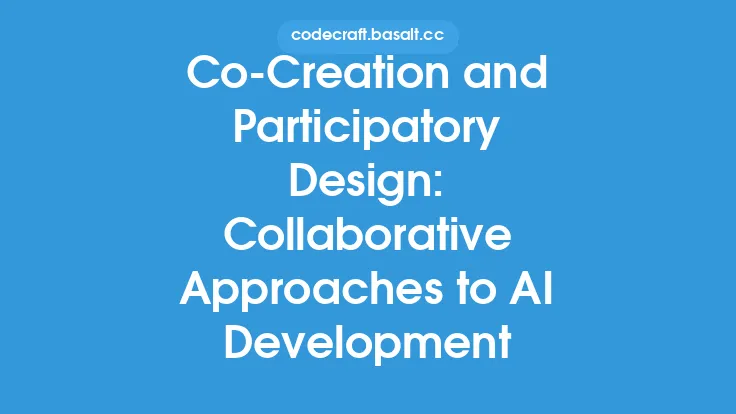Object creation is a fundamental aspect of software development, and it can be a complex and challenging task, especially in large and complex systems. Creational patterns provide a solution to this problem by offering a set of proven strategies for creating objects in a flexible and reusable way. These patterns help to decouple object creation from the specific implementation details, making it easier to modify and extend the system over time.
Introduction to Creational Patterns
Creational patterns are a type of design pattern that deals with the creation of objects. They provide a way to create objects without specifying the exact class of object that will be created, allowing for more flexibility and reuse in the system. Creational patterns are used to solve problems related to object creation, such as how to create objects, how to structure the creation process, and how to manage the lifetime of objects. There are several types of creational patterns, including the Singleton pattern, the Factory pattern, the Abstract Factory pattern, the Builder pattern, and the Prototype pattern.
Types of Creational Patterns
Each type of creational pattern has its own strengths and weaknesses, and is suited to solving specific problems related to object creation. The Singleton pattern, for example, is used to ensure that only one instance of a class is created, and provides a global point of access to that instance. The Factory pattern, on the other hand, is used to create objects without specifying the exact class of object that will be created, allowing for more flexibility and reuse in the system. The Abstract Factory pattern is used to create families of related objects, while the Builder pattern is used to create complex objects step-by-step. The Prototype pattern is used to create new objects by copying existing objects.
The Singleton Pattern
The Singleton pattern is a creational pattern that ensures a class has only one instance and provides a global point of access to it. The Singleton pattern is useful when a single, global instance of a class is required, such as a configuration manager or a logging system. The Singleton pattern is implemented by making the class constructor private and providing a static method that returns the single instance of the class. The Singleton pattern has several benefits, including ensuring that only one instance of the class is created, providing a global point of access to the instance, and reducing the overhead of creating multiple instances of the class.
The Factory Pattern
The Factory pattern is a creational pattern that provides a way to create objects without specifying the exact class of object that will be created. The Factory pattern is useful when the type of object to be created is determined by a complex configuration or when the type of object to be created may change over time. The Factory pattern is implemented by creating a factory class that encapsulates the object creation logic and returns an instance of the created object. The Factory pattern has several benefits, including decoupling object creation from the specific implementation details, making it easier to modify and extend the system over time, and providing a way to create objects without specifying the exact class of object that will be created.
The Abstract Factory Pattern
The Abstract Factory pattern is a creational pattern that provides a way to create families of related objects. The Abstract Factory pattern is useful when a system needs to create multiple, related objects, such as a database connection and a database query object. The Abstract Factory pattern is implemented by creating an abstract factory class that defines the interface for creating the related objects and concrete factory classes that implement the interface. The Abstract Factory pattern has several benefits, including providing a way to create families of related objects, making it easier to modify and extend the system over time, and decoupling object creation from the specific implementation details.
The Builder Pattern
The Builder pattern is a creational pattern that provides a way to create complex objects step-by-step. The Builder pattern is useful when a system needs to create complex objects that require multiple steps to construct, such as a car or a computer. The Builder pattern is implemented by creating a builder class that encapsulates the object creation logic and provides a step-by-step approach to creating the object. The Builder pattern has several benefits, including providing a way to create complex objects step-by-step, making it easier to modify and extend the system over time, and decoupling object creation from the specific implementation details.
The Prototype Pattern
The Prototype pattern is a creational pattern that provides a way to create new objects by copying existing objects. The Prototype pattern is useful when a system needs to create multiple objects that are similar but not identical, such as a document or a spreadsheet. The Prototype pattern is implemented by creating a prototype class that defines the interface for creating the new object and concrete prototype classes that implement the interface. The Prototype pattern has several benefits, including providing a way to create new objects by copying existing objects, making it easier to modify and extend the system over time, and decoupling object creation from the specific implementation details.
Best Practices for Using Creational Patterns
Creational patterns can be powerful tools for managing object creation in software systems, but they must be used judiciously and with careful consideration of the trade-offs involved. Some best practices for using creational patterns include using the simplest pattern that solves the problem, avoiding overuse of patterns, and considering the performance implications of using patterns. Additionally, it is essential to document the use of creational patterns in the system and to communicate the design decisions to other developers.
Common Pitfalls and Misconceptions
There are several common pitfalls and misconceptions related to the use of creational patterns. One common pitfall is overusing patterns, which can lead to unnecessary complexity and overhead in the system. Another common pitfall is using the wrong pattern for the problem, which can lead to a solution that is not effective or efficient. Additionally, some developers may misunderstand the purpose and benefits of creational patterns, which can lead to a lack of adoption or incorrect use of the patterns.
Conclusion
Creational patterns provide a powerful set of tools for managing object creation in software systems. By using creational patterns, developers can decouple object creation from the specific implementation details, making it easier to modify and extend the system over time. Each type of creational pattern has its own strengths and weaknesses, and is suited to solving specific problems related to object creation. By understanding the different types of creational patterns and how to use them effectively, developers can create more flexible, maintainable, and scalable software systems.





